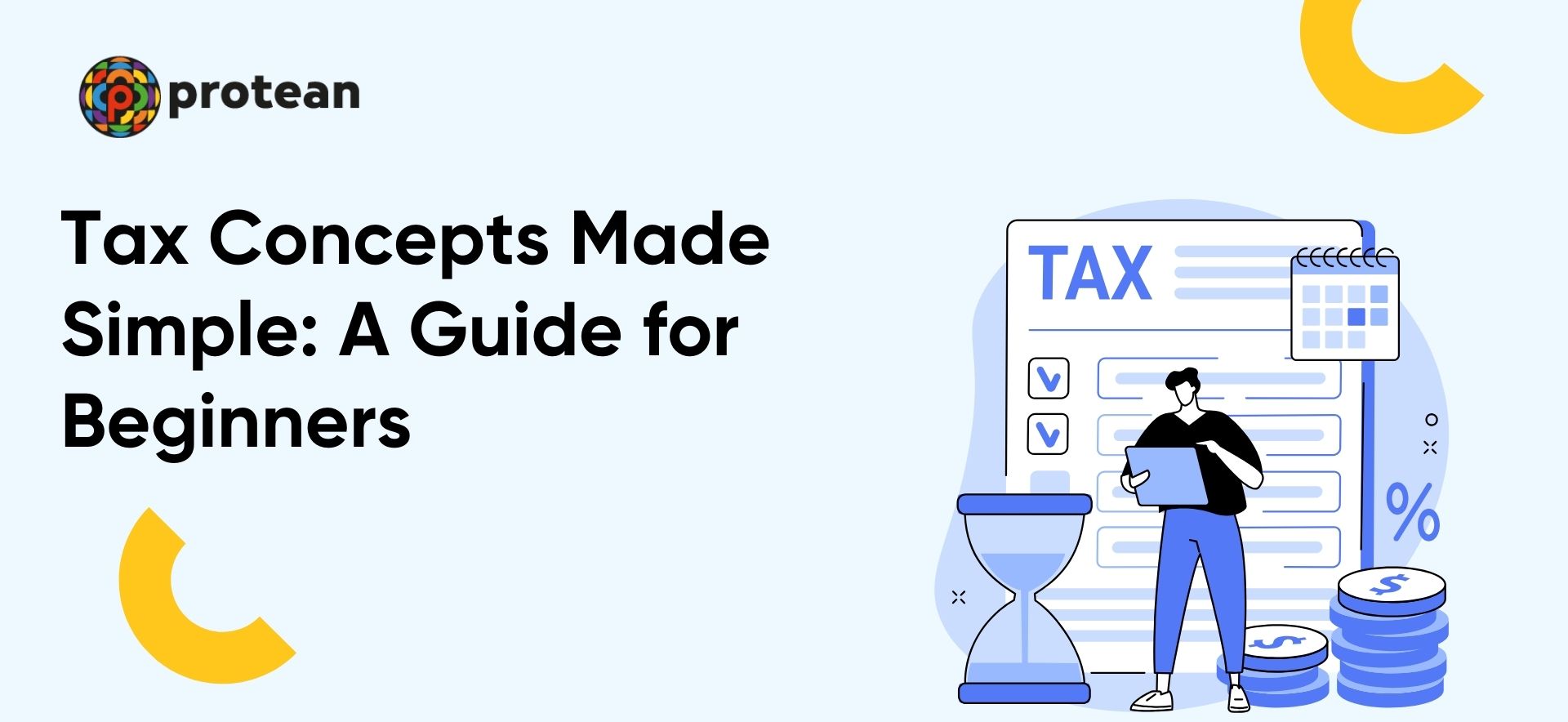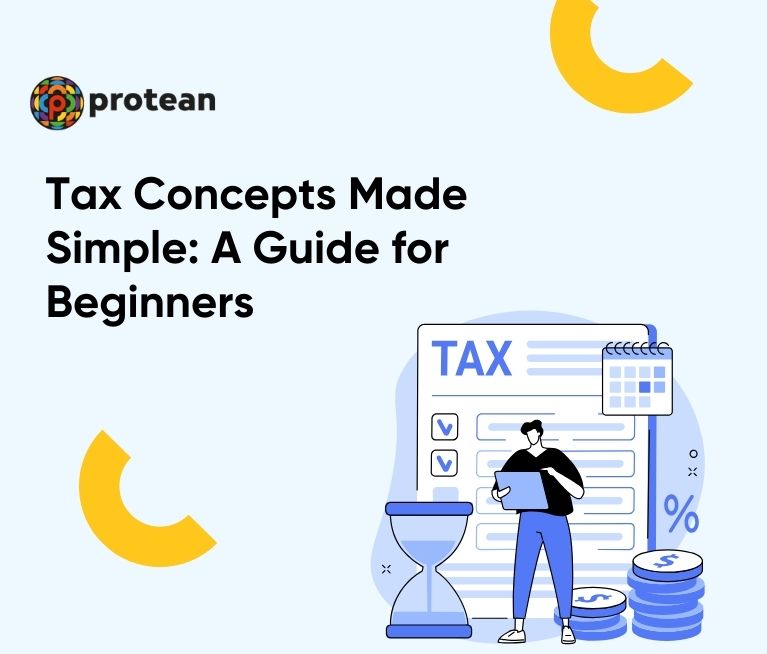The stream of taxes can seem complicated and confusing, especially if you’re starting your financial journey. However, having a basic understanding of taxation is important for everyone - from salaried individuals and business owners to students and homemakers. This beginner’s guide aims to simplify key tax concepts so you can file your taxes correctly, reduce your tax liability, and avoid penalties.
Basics of Income Tax
What is Taxable Income?
Taxable income refers to the amount of your total earnings subject to tax after all deductions, exemptions, and rebates have been accounted for. This income amount determines your tax liability.
Difference Between Gross Income and Net Income
Gross income is your total income from all sources before any deductions. Net income is arrived at after subtracting permissible deductions from your gross total income. Your tax liability is calculated on your net taxable income.
Tax Deductions and Exemptions
The government offers various tax deductions and exemptions to reduce your taxable income. For instance, Section 80C deductions up to ₹1.5 lakhs for investments, home loan EMIs, etc. Exemptions also apply to HRA, LTA, and medical insurance premiums.
Contrast Between Tax Credits and Deductions
While deductions reduce your overall taxable income, credits directly reduce your tax liability. For example, Section 80TTA offers a deduction while Section 87A provides a rebate that credits up to ₹12,500 directly to your tax liability.
How Tax Brackets Determine Your Tax Rate
Tax rates in India are based on different income slabs or brackets. Each bracket has an Ascending tax rate - the more you earn, the higher your applicable tax rate, up to 30 percent. Your income bracket also determines the tax deductions and rebates you are eligible for.
Also Read: PAN Card Correction Guide |
Types of Taxes
There are two main types of taxes - direct and indirect.
I. Direct Taxes
The different types of direct taxes are:
- Income Tax: The tax levied on your income from salaries, investments, interest, etc, based on set rates for different slabs, falls under income tax. It has to be paid yearly.
- Corporate Tax: Domestic companies pay a base 22 percent tax on net profits with applicable surcharges, which is 25.75 percent effective.
- Property/Capital Gains Tax: Any profits you earn from selling a property or investment at a price higher than the purchase value attract capital gains tax. Rates depend on the type of asset sold and the duration of the investment.
II. Indirect Taxes
The different types of indirect taxes are:
- Goods and Services Tax (GST): GST combines all indirect central and state taxes into one unified tax system on the supply of goods and services. It has four main rate slabs: 5, 12, 18, and 28 percent.
- Value Added Tax (VAT): VAT is an indirect tax levied on goods sold in India. It is applicable at each production and distribution chain stage with tax credit benefits for business transactions between registered dealers.
- Excise Duty: Excise duty is an indirect tax levied on goods manufactured in India. It is applicable to goods like cigarettes, alcohol, etc., at the time of manufacture.
- Customs Duty: Customs duty is an indirect import or export tax levied on goods entering(importing) or leaving(exporting) the country. It includes basic customs duty and IGST.
Step-By-Step Tax Filing Process
The tax filing process involves key steps like tax planning, form selection, form submissions and following up on refunds or dues. Here is a quick overview:
- Determine Residential Status
- Calculate Taxable Income
- Select the Right ITR Form
- Fill form correctly
- Verify the form, submit supporting documents
- E-file form before the due date
- Pay due tax online
- Track returns status
- Claim refunds or respond to notices
It is also essential to verify PAN card details before filing taxes to ensure the accuracy of your tax records and avoid discrepancies.
Understanding Tax-Saving Strategies
There are several legitimate ways to minimise your tax liability through permitted deductions under Section 80 of the Income Tax Act.
Investment Deductions (80C, 80D etc)
Section 80C, 80CCC and 80CCD offer combined deductions of up to ₹1.5 lakhs for investments like PPF, ELSS, NPS, ULIPs, etc. 80D offers deductions on health insurance premiums.
Retirement Contributions
Contributions to the Employees’ Provident Fund (EPF), Public Provident Fund (PPF), and National Pension System (NPS) offer tax benefits under Sections 80C and 80CCD up to ₹2 lakhs.
Home Loan Interest Deductions
You can claim income tax deductions up to ₹2 lakhs yearly under Sections 24 and 80C on interest payments and principal repayments towards your home loans. If conditions are met, capital gains tax exemptions also apply to selling your house property.
Education and Medical Expense Deductions
Children's tuition fees, interest on education loans, and certain medical expenses offer additional tax benefits under Sections 80C, 80E, and 80DDB.
Also Read: PAN Card Benefits |
Employer and Employee Tax Responsibilities
Payroll Taxes and TDS
As an employer, you must deduct TDS and remit it to the IT Department on behalf of employees. As a salaried employee, you must ensure that TDS is reflected correctly in Form 16 and 26AS.
Importance of Form 16
Issued by employers, Form 16 has all information on salaries paid and taxes deducted. It serves as proof of TDS deduction by the employer and should match your Form 26AS.
Understanding Tax Deducted at Source (TDS)
TDS refers to a specific percentage of tax deducted from your income by the payer before paying you. It serves as an advanced tax and hugely eases final tax calculation.
Common Misconceptions About Tax
Myth 1: Filing Income Tax Returns is optional
Fact: It is mandatory if your annual income exceeds a minimum threshold
Myth 2: Tax deductions mean less taxes
Fact: Deductions only reduce your taxable income; your savings determine the actual tax paid
Myth 3: Only salaried individuals need to pay taxes
Fact: Anyone earning above a minimum threshold has to file ITR - irrespective of source
Myth 4: Tax evasion will go uncaught
Fact: Today's IT systems and compliance make it very tough to evade taxes without getting caught and penalised.
Also Read: Online PAN Card Guide |
Tax Penalties and Legal Compliance
Consequences of Tax Evasion
Attempting to evade taxes by underreporting income, inflating deductions, or hiding assets can lead to severe penalties equivalent to almost three times your actual tax dues and possibly imprisonment for up to seven years, as per Indian tax laws.
Late Filing and Interest Charges
If you fail to file your ITR by the due date, you may be charged up to ₹10,000 and charged interest up to 1 percent per month for outstanding tax payments.
Tax Notices and Audits
In case of discrepancies/under-reporting identified by the IT Department through CIBIL, Form 26AS, etc., you may receive an audit notice or demand for additional taxes, which must be paid within the stipulated time.
Understanding Tax Refunds
If excess TDS has been deducted or taxes paid after all deductions, exemptions, and rebates, you can claim an income tax refund with applicable interest from the date of payment to the refund date.
Conclusion
This guide summarises crucial tax concepts for every citizen to understand. Taxes need not seem intimidating if you file returns accurately before deadlines, claim eligible deductions to minimise dues, and maintain supporting paperwork. Timely compliance and planning helps you save money while funding the nation's development. Stay aware of tax responsibilities, manage them rightfully, and contribute to the country's growth.
| Also Read: PAN Card Online Application |
Written by Bruhadeeswaran R.
Bruhadeeswaran R. is a B2B content expert with 14+ years of experience, specializing in National Pension System (NPS), PAN, DPI, eSignPro, and Central KYC. As Editor and Lead Content Writer at Protean eGov Technologies, he simplifies complex e-governance topics through engaging blogs, reports, and digital content.

